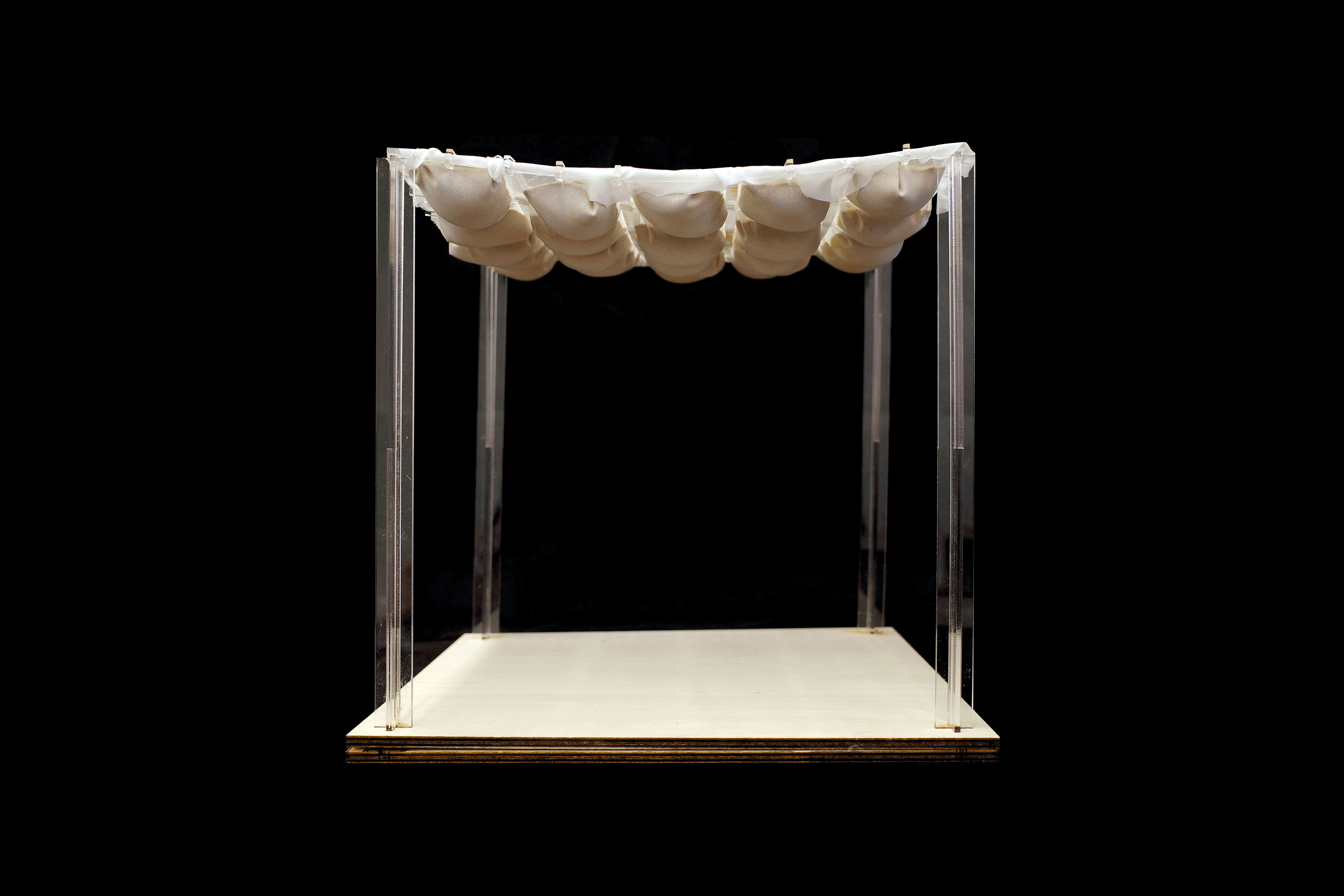Rice Architecture
22HM_X01
HANGING MODEL / EXPERIMENT ONE
As we considered various options for experimenting with a hanging model, we discovered that a common direction of students in past classes was to hang string or net from a grid. After realizing this classic pattern, we decided to diverge slightly by instead using the mass of sand to manipulate a field of fabric. First, we created a system to hang the tulle fabric by cutting a 5x5 square grid out of acrylic. With each variation of our experiment, we distributed the weight of the sand differently within the grid. To create a consistent system, we maintained set amounts of sand: 0oz, 5oz, 10oz, 15oz, and 25oz. This range of mass influenced the force of gravity on the fabric in varying ways, creating a range of configurations of sand that stretched the tulle through the grid and caused it to hang at varying lengths below. However, the force of gravity on the sand would often cause our fabric to attempt to fall through the grid, so we secured it to the edges using acrylic clips and white thread. Early in the experiment, we almost used more acrylic stands in the center of the grid because we were afraid of the sagging caused by our mass. However, we eventually realized that the curve of the grid is an important factor of the system; to “fix it” would neglect and attempt to hide another dimension of hanging in the model. We also found that the extent to which the acrylic grid sagged was strongly related to the distribution of weight on the grid. When the greater weight of sand was concentrated in the center, as opposed to being distributed along the edges, the grid dipped at a greater magnitude as well.
Grace Andrews
Valerie Elizondo
Kexuan Shang
Ekene Emenike
PHYSICAL MODEL







DIGITAL MODEL



















